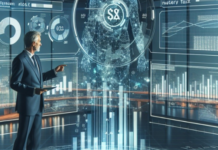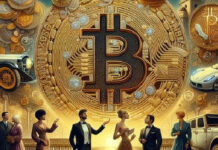Sarson Funds, Inc.
Digital assets are so much more than cryptocurrencies.
While a lot of the investing world has been focused on creating strategies, infrastructure and products around trading and owning crypto, an even larger blockchain investing revolution is brewing in non-fungible tokens (NFTs), said Blake Richman, Portfolio Manager at Sarson Funds.
“There are new projects launching every day, even a couple of times each day, there’s a lot going on in the space, and there are a few subsectors we think people should be paying attention to,” he said, noting that advisors should pay attention to both NFT collectibles and digital art as some of their clients may already be participating in these markets.
An NFT is just a digital token built on a blockchain, like a cryptocurrency, but unlike a cryptocurrency, there’s only one of each NFT. An NFT uses blockchain to enable someone to purchase and authenticate their right to something unique.
Collectibles
NFTs saw their first explosion in the world of collectibles, and that’s still an area worth watching today, said Richman. One of the earliest mass applications of NFTs was in 2019 , when CryptoPunks, a collectible set of 10,000 unique images released on the Ethereum blockchain. Cryptopunks quickly became popular as social media and internet profile pictures, and due to their scarcity, began to rise in value.
“Setting this as a profile picture on Twitter or somewhere else immediately signals to everyone that you have the money to buy this thing and that you’re a member of a select community—and these started to get celebrity uptake,” said Richman. “Then some projects have gone on to add events, airdrops, certain services and rewards that you need to own one of these things to access, like discord channels and chat groups.”
There’s no easy way to predict which NFT profile picture collection is going to catch on, Richman said. Some of these NFTs are carefully and diligently constructed over time, while others are created over the span of a weekend. Some projects are clearly cash grabs.
“About 50% of it isn’t durable when the market turns, and people are coming into it mostly because these things are cheap to buy initially but if they take off, they get outrageously expensive,” Richman added. “They’re a quick pathway to liquidity and a fast multiple on the money for some of the larger ones with significant community uptake.”
Investments in these collectible projects are becoming more liquid thanks to the growth of secondary markets like Opensea, which allow managers to track each project by looking at how many holders there are of a set of NFTs as a percentage of total supply, a.k.a. supply and demand.
If there are 10,000 images in an NFT project but only 1,000 holders that’s only a 10% holder to supply ratio, which is a fairly narrow distribution, but if there are 5,000 holders, the ratio increases to 50%, signaling a more durable community of participants in a project.
“These things are minted from anywhere to 0.02 and 0.1 Ethereum, sometimes 0.25 or 1, which is a relatively minimal amount in terms of Ethereum,” said Richman. “Immediately after it sells out, there will be people who wanted to buy but missed the mint. Right off the bat you’ll see a surge in value that is two-, three-, maybe five-times.”
Speculators will often ride that initial increase in value hoping for a quick profit, said Richman, but community participation helps these NFTs maintain or grow value over time. The best projects offer incentive for continued community participation, and are sought after by high profile athletes, musicians, and athletes.
NFTs continue to grow in popularity. Learn about another type next week in part 2, with Blake Richman.








